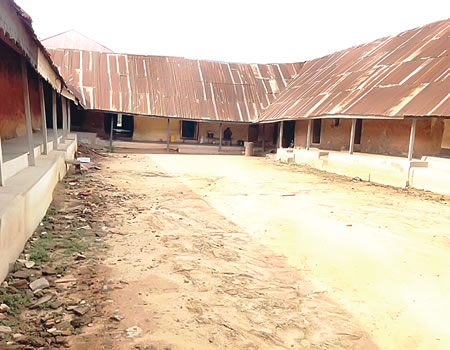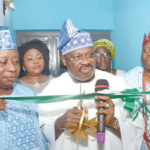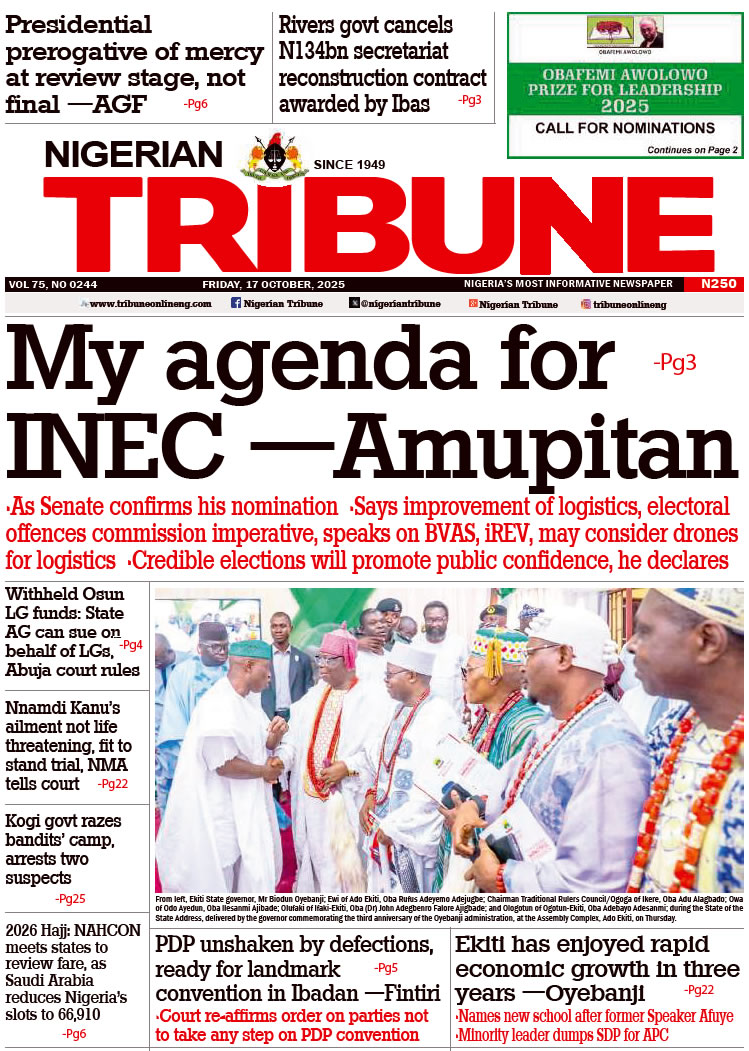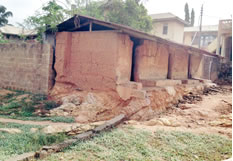
The ancient town of Owo, in the present Owo Local Government Area of Ondo State, came to being at about the closing of the 10th century and its 1,000 years of existence would be celebrated in 2019. Owo was regarded by many as the political Mecca of Yorubaland before the attainment of Nigeria’s independence. This was particularly so as all political roads led to Owo and all political gladiators from the old Western region saw Owo as a veritable locale for the realisation of their aspirations. The formation of the Action Group which transformed from Egbe Omo Yoruba, took place within the ancient Owo palace.
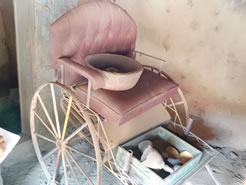
Many years after, especially after the nation attained independence, the Owo palace had gained ascendancy as it got to be regarded as the largest and biggest in the whole of Africa. Given this recognition, it was named one of the national monument centres of the Federal Government of Nigeria.
The palace of the paramount ruler of Owo Kingdom, which has housed no fewer than 27 kings, was built in 1340 when the then Olowo of Owo, Olowo Irengenje who was said to have made significant achievements during his reign, moved the palace from the Ojuti Asegbo to its present site. The place according to history has more than 1,000 rooms and courtyards known as Ugha while some of the courtrooms served as shrine and worship of ancestors, also housing many monuments and artefacts.
This could be one of the reasons why the National Museum Centres is situated within the palace. The palace is located at the centre of the town with a central market directly in front of it.
Speaking on the significance of the palace, the Olubola of Owo, Chief Olusola Ogunleye, said the ancient palace “still plays a significant role” despite the existence of the new palace of the Olowo. He said the palace of the olowo had as many as 100 courtyards on a 180-acre of land with each courtyard having its specific function while some were dedicated to specific deities. He explained that some of the courtyards are used for public assemblies and festivals and most of these courtyards were built with strong pillars supporting them.
Chief Ogunleye said the Olowo is the principal occupant of Aghofen (the palace) and the people of the area are expected to provide the needs of the traditional ruler.
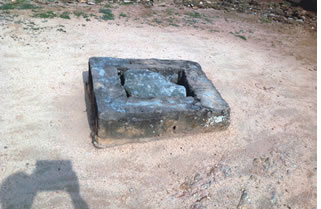
Conducting Nigerian Tribune round the courtyard, a palace Chief, the Owamodu of Owo, Chief Tola Owatowose, said the palace symbolises the integrity of Owo Kingdom while he said some people voluntarily carry out the maintenance of the palace to show their allegiance and respect to the king and the kingdom.
The Owamodu of Owo said most of the courtyards had collapsed or caved in but said about 17 of the courtyards are still in existence. Some of the courtyards include the Ugha Moron, which is a special courtyard where past Olowos were buried. He explained that this courtyard is set aside for the worship of past ancestors and kings. He equally added that the king usually visited the courtyard once in a year during the celebration of freshly harvested kolanuts, emphasising that women were not allowed in the yard except the queen—Olori.
One of the largest courtyards in the palace is known as Ugha Okonren. This courtyard is specially designed for men and was usually used for the gathering of male folks. The next to the men’s courtyard is the Ugha ehin ode where every chief had their own allotted seat according to their hierarchy, in descending order of importance while the Olowo occupied the central seat.
Some of the courtyards were exclusively reserved for the king’s use which included Ugha Akomaduse. Here, the king was expected to relax and hold interactive sessions with his high chiefs. It was a place where the chiefs were expected to pay homage to the king in the morning. The place where the king lived was known as Ugha Gwakun. Inside this yard existed Odo uli courtyard where the king had his meal, while he had his bath at Ugha Agwe courtyard while the Ifa oracle was consulted on behalf of the king at this courtyard too.
Also, Ugha Inogwa was the traditional ruler’s relaxation spot after the day’s work and this place was cleaned on a daily basis by his wives who had to be naked while scrubbing or cleaning the courtyard.
Chief Owatowose said the present Olowo still used some of these places till date. For instance, the Olowo visited the courtyard to dress and undress for the annual Ighogho Festival. He explained that not all chiefs were allowed to enter some of these courtyards.
The wives of the king also had special courtyards within the palace and these places were out of bounds for men except the Olowo alone. The Ugha Oluwabunmile and Ugha Yeyeluwa were particularly reserved for the head queen. Other courtyards of the queens included Ugha Tere, Ugha Gbedu and Ugha Okelade. Food and gift items were shared in these courtyards. The palace also has a special courtyard for preserving food items for the use of the palace; it is known as Ugha Ogba. Foodstuffs presented by the people to the king are preserved in this barn.
At the palace, there are different sizes of drinking cups known as agho. The type of cups depends on the grade or the hierarchy of the chiefs and this is only done during festivals. The Olowo also has a chariot which he used to move round the town during special festivals.
According to the palace chief, relatives of the king and his wives lived in the palace but he quickly added that princes and princesses were not allowed to live in the palace during their youthful days, adding that when married, they were moved out of the palace.
Male servants who lived within the palace were castrated but the head of the servants if not castrated lived outside the palace wall but had to be at the palace before the cock crow and would also be the last to leave the palace.
Chief Owatowose also took Nigerian Tribune to the Igbimo Aleli, where the king and his chiefs were gathered on special occasions. Apart from the king and his high chiefs, there is a place within this courtyard specially reserved for the administration of oath. He said the place was created for oath taking and it was to prevent crime in the town.
The palace chief who said the palace which used to house over 1000 people experienced some decay after the deposition of Oba Olateru Olagbegi II, who was removed by the government then. He listed some features which were noticeable at the old palace before he was deposed to include the lawn tennis court, fish pond with golden fishes, and some others. He however said some part of the 180-acre land had been given out to usher development to Owo. He said the present Government Primary School beside the palace and the new mega school were part of the palace before it was given out.
According to him, “though some of these courtyards have collapsed but we preserved some of the things in it. This palace is the biggest and largest in Africa but little or no attention is given to this heritage. Some government officials had been here and promised to give the old palace a facelift but they never fulfilled their promises.”
An indigene of Owo, Richard Olabode, stressed the need to preserve the old Olowo palace, saying “monuments are a vital part of any country; preserving them is the duty of the government. This can be achieved by establishing a synergy with the people of this area because these are places which remind us of our ancestors. Owo palace is one of the historical places in Africa as it remains the largest palace in the whole of Africa but government needs to shift attention to this place as it stands to bring more money to the coffers of government as one of the tourist centres in the state.”
Indeed, the architectural designs of the ancient palace of the Olowo testify to the affluence and power that Yoruba traditional rulers of the past wielded and the respect their subjects accorded them.
WATCH TOP VIDEOS FROM NIGERIAN TRIBUNE TV
- Relationship Hangout: Public vs Private Proposals – Which Truly Wins in Love?
- “No” Is a Complete Sentence: Why You Should Stop Feeling Guilty
- Relationship Hangout: Friendship Talk 2025 – How to Be a Good Friend & Big Questions on Friendship
- Police Overpower Armed Robbers in Ibadan After Fierce Struggle

